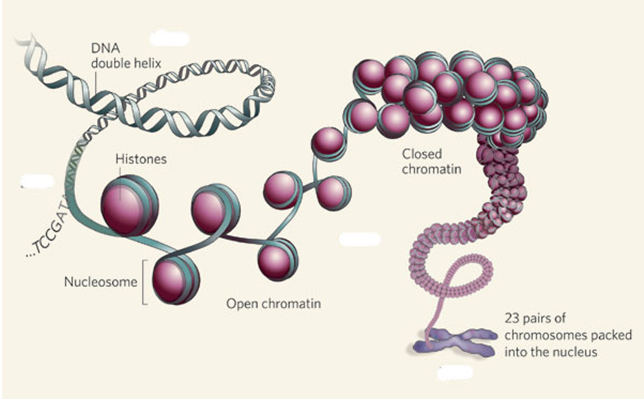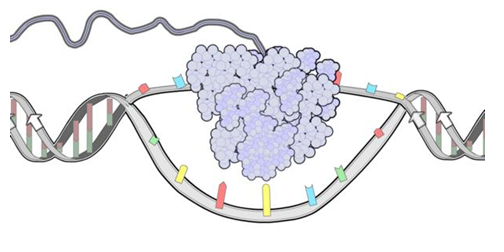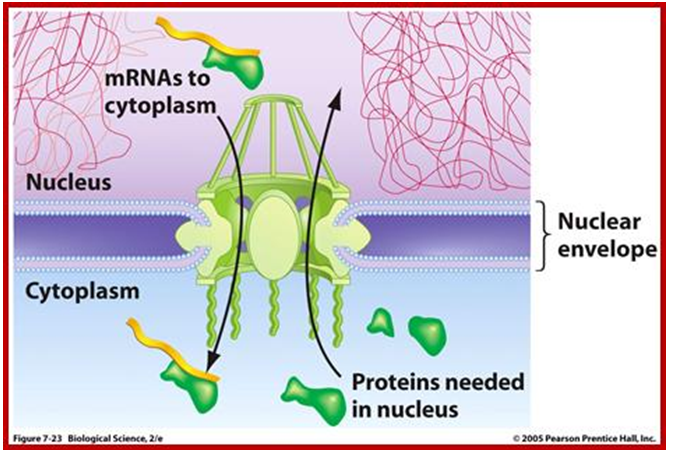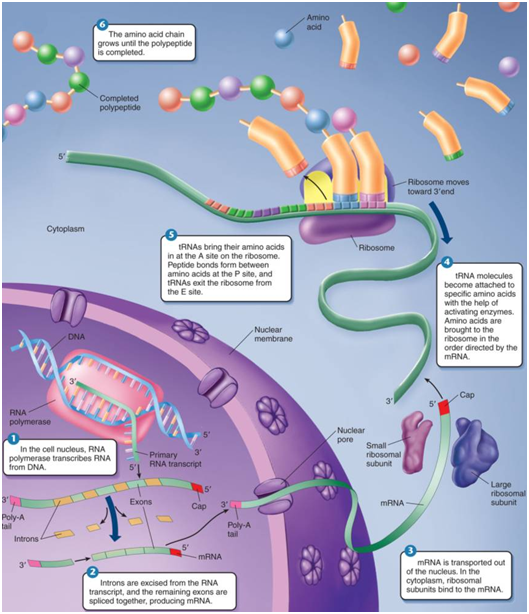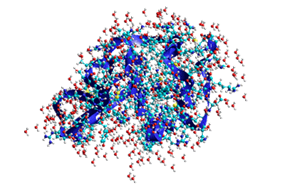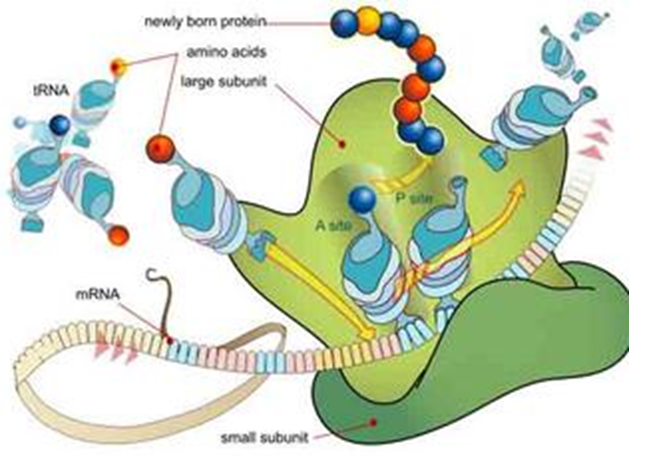Evolution and its Adversaries – 8
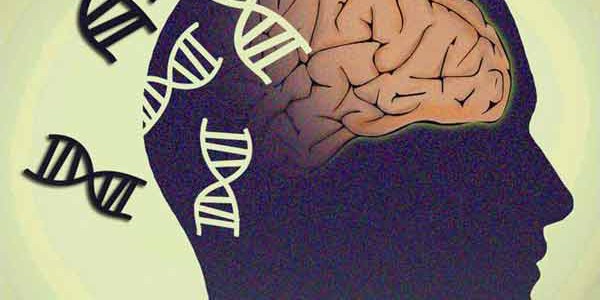
The importance accorded to genes in our contemporary world is also because of Darwin-like ignorance of their nature and functions. There are suggestions that genes are responsible for schizophrenia, homosexuality, drunkenness, alcoholism, drug addiction, and so on, without any scientific evidence whatsoever, writes SYED IQBAL ZAHEER.
Perhaps the last leg of the discussion about the cell, its contents, functions, and complications, would be to present the ABC of genes before moving on to their role as envisaged by the evolutionary biologists and, down the line, refutation of their ideas by other, level-headed biologists.
Misconceived Functions of a Gene
Of the functions that have been attributed to the genes by the general body of biologists, evolutionary or not, but more emphatically by evolutionary biologists, is that genes are responsible for structure of the body, its developers and modifiers. And, since they have the power to self-replicate, it means, they are controllers of the individual’s body, and hence, by extension,of the society too. Acutely aware of the living conditions, the genes are supposed to regulate population sizes too. They know the environment surrounding the organism in which they sit, are fully aware of the food stocksclose and far, and in fact, also know some mathematics. They are selfish too. Culture is determined by them. In short, humans are robots, slaves of the genes. This is the idea that Dawkins’ books give.
In the words of Lewontin (an evolutionary biologist), criticizing the generally prevalent wrong concepts:
“If one society is different from another, that is because the genes of the individuals in one society are different from those in another. Different races are thought to be genetically different in how aggressive or creative or musical they are … Genes make individuals, individuals have particular preferences and behaviors, the collection of preferences and behaviors makes a culture, and so genes make culture.” (The Doctrine of DNA, p.14, Penguin, 1993).
And,
“Over and over again, leading intellectuals have assured their audiences that modern science shows that there are inborn racial and individual differences in ability. Nor have modern biologists taken a different view … biological determinism has been the mainstream commitment of biologists. Yet these claims are made without a shred of evidence and in contradiction to every principle of biology and genetics.” (ibid, p. 26)
The Slinking Idea
Most of the time, however, the object of such misleading efforts seem to have been to project white man as the most advanced, be it in science, technology, religion, philosophy or culture. This was ‘between the lines’messagein Darwin’s The Origin of Species that helped win the approval of many Western scientists. One may note the words italicized by us in another ofLewinton’squote below:
“He claimed that there was a universal struggle for existence because more organisms were born that could survive and reproduce, and that in the course of that struggle for existence, those organisms who were more efficient, better designed, cleverer and generally better built for the struggle would leave more offspring than the inferior kinds. As a consequence of this victory in the struggle for existence, evolutionary changes occurred.” (ibid, p. 9)
The Role of Ignorance
Darwin did not know a word about genes. They came to be discovered almost a hundred years after him. Had he known about genes, perhaps, instead of natural selection he would have accorded genes the main role in evolutionary scheme.
The importance accorded to genes in our contemporary world is also because of Darwin-like ignorance of their nature and functions. There are suggestions that genes are responsible for schizophrenia, homosexuality, drunkenness, alcoholism, drug addiction, and so on, without any scientific evidence whatsoever.
It is also said, in textual and popular biological works, that the entire information to build a biological body (eukaryotes) is encoded in the genes. So that, a man’s internal and external physical features are wholly determined by them. Consequently, if you had the genes, you could as well build the body as a construction engineer with the complete blue print on hand can construct a building.
But all that is not true. Genes do no such thing. They do not even self-replicate. If you placedone of them in a test tube, it will not replicate; nor does it in the cell. But rather, genes, primarily, but not exclusively, store information in code.Yet, they do not store all the information. That information cannot be extracted, nor can it be trusted for a definite data.
They do not determine the shape and form of a body. But rather, they encode the information for proteins. The genes do not produce proteins. They ‘cannot.’ They only carry the information in code. It is a series of machinery, more than 150 of them, that pick up the code from the genes, extract the information, and then manufacture the proteins. The machinery themselves are proteins, that run the cell and replicate its parts (organelles). The gene is a mystery and anything attributed them as being ‘responsible for,’ has an element of uncertainty.
An 800-page text book prepared by six biologists of different disciplines (Nancy L Craig, Orna Cohen-Fix, Rachel Green, Carol W Greider, Gisela Storz, CythiaWolberger) says:
“Comparative and functional genomics have re-opened the decade-old debate ‘What is a gene?’ When that question was asked during the second half of the twentieth century, a molecular biologist could answer with some confidence: a gene is the nucleotide sequence information needed to make a functional RNA or polypeptide chain. Although that is still a good answer, we now realize that is an incomplete answer. As we have seen, many genes encode hundreds of proteins due to processing to give alternative mRNA ends, alternative RNA splicing, and alternative protein processing. In addition, many genes encode regulatory RNA molecules, perhaps as many as the genes that encode polypeptide chains. Other sequence elements are conserved between species and even transcribed but their functions are still unknown; should these also be classified as genes? Even as we learn more the structure and function of genomes, the answer to this fundamental question appears to become more elusive.” (“Molecular Biology,” p. 679, Oxford University Press, 2010)
Gene’s Doings?
Despite the difficulty, to proceed further, we might say that the information necessary to manufacture a protein is on the gene. The gene is a segment or segments on the chromosome: a bunch of nucleotides. The chromosome is a lengthy strand in the shape of a ladder. The ladder is twisted like a rope, and the assembly is in the form of a double helix. The whole is wrapped around a chemical substance called histones. Over and above, is another strip of Histones.Finally, the entire thing (the DNA) is stored in the nucleus. It never, never, comes out of the strong room called nucleus.
Within the nucleus, a machinery arrives (seemingly from nowhere) to unwrap the histones at the targeted area of the DNA. Another will free the DNA from the Histones altogether. That over, another machinery must unwind the double helix; another must separate the two strands at the required area (alone, and not the entire chromosome. Another machine reads the nucleotides (A’s, T’s, C’s and G’s). At the minimum this machinery must read 900 nucleotides. As the nucleotides are read and copied, they encounter lots of nucleotides that are not part of the gene (the Introns). So another machine must cut off the portions that are not useful. Another machine must join the useful parts (the Exons) and produce a strip, say 300 nucleotides long (called mRNA). If the reader-machinery had made an error, another machine must repair it – otherwise the manufacturing machinery will not be able to produce a functional protein.
Then the corrected, edited strip must be sent out from the nucleus through its pore, helped on by some enzymes, into the surrounding material called cytoplasm. There, out of millions of protein manufacturing machines called Ribosomes, a particular one must be chosen for further operation. The strip prepared is fed to it. This machine will use free floating amino acids (brought to it) to assemble the specified protein. When complete, the protein will be carried on to where in the cell it must perform the function it was manufactured for.
The operations above can be re-stated in the words of a biologist, Steven Rose:
“The histones surrounding the relevant region or regions of the double helix must be unwrapped, the DNA strand must be separated, enzymes must transcribe the ‘sense’ into its matched length of RNA, and individual RNA lengths must be spliced, edited and further manipulated in the cell nucleus. Even then, there are further controls. To leave the nucleus and be inserted into the copying machinery in the cell cytoplasm, the RNA message must pass through the nuclear membrane, for which it requires a biochemical ‘exit permit’ provided by the membrane proteins. In eukaryotic cells, this ribosomal machinery itself consists of a giant assemblage of sub-units together containing more than 80 different proteins, and RNA sequences containing more than 6,700 nucleotide bases. Without it, without the biochemical environment the cell provides, ‘genes,’ in the DNA of the term, simply can’t function.” (Lifelines, p. 128, Penguin, 1997).
To further explain the process, let us illustrate with the help of figures and charts:
http://www.visembryo.com/story4325.html
Fig. 8-1
One must study the above from right to left. A packaged DNA (called Chromatin) is pulled out from one of the 26 chromosomes. The package is opened to reveal the opened out chromatin. (The objective in such packaging appears to be to reduce the 2 meter length to a size measurable in nanometers).
The protein that is used for packaging is called Histone. Some are those around which the DNA is wrapped, (which are shown as balls above); while others, visible in the illustration below, are those which are attached to the DNA. (See illustration (8-2) below showing Histones)
Various proteins are used to unwrap and then expose the DNA. Subsequently, new machinery, hanging around, closes in upon it, to first unwind, and then split the DNA as shown at extreme left, top.
http://biology.kenyon.edu/courses/biol114/Chap01/chrom_struct.html
Fig. 8-2; DNA unwrapping from Histones
After the unwrapping of the DNA strand from Histones, there comes along other machinery (proteins) which unwind the coiled DNA (figure below). The machine somehow knows the area to be unwound, and, thereupon another machine takes over. It will copy from one of the strands a chain of nucleotides that carry the coded message for a particular protein in demand. This is the genetic message, or, to make it simple, ‘the gene.’
http://biology.tutorvista.com/cell/dna-transcription.html
Fig. 8-3
This operation is called transcription.The copied unit is called mRNA. It is a chain of nucleotides as copied from the DNA. Several machineries are involved. (Only two are shown in the above as oval-shaped dark pink bodies)
Transcription is stated as the synthesis of the RNA from a DNA template, i.e. DNA transcription is the process where genetic information is transcribed from DNA to RNA. The transcribed DNA or mRNA transcript is used to produce proteins. So transcription is a temporary copy of information in mRNA,which is made by using DNA as a template.
Fig. 8-4
The above shows a machinery (it is a group of molecules) reading out from the DNA the A’s, T’s, C’s and G’s (nucleotides) – after the DNA was uncoiled and the two strands were split. The strip coming out (top-left, darkened strip) is the mRNA.
However, protein manufacture will not take place in the nucleus. So the RNA strip must be sent out into the cytoplasmic area around the nucleus. There are about 2000 pores (or gateways) in the nucleus membrane through which alone material can go in and out.However, no material can leave out without a chemical ‘exit-permit.’ The exit-permit is provided by membrane proteins. (Lifelines, p.128)
Fig. 8-5
The above is a very simple illustration of a pore in the nucleus wall (nucleus membrane). The upper area is the nucleus, and the lower area the cytoplasm. Materials, such as mRNA, will be allowed to go through this area to leave for the Cytoplasmic area and proteins would be allowed to go into the nucleus.
Fig. 8-6
The above shows the transcription script, (the mRNA), traveling out of the nuclear pore and landing at the site of a machinery called Ribosome. This machinery will read the mRNA strand, and then, unit by unit, and with the supply of amino acids (floating around) construct the protein chain. That is, this machine reads the nucleotides A’s, T’s, C’s and G’s, three at a time, collects the corresponding amino acids, in the order it reads, to create protein chain, which when completed, will fold into a particular shape, in which shape alone the protein is useful. Of the thousands of amino acids thus read, and joined, not a single error is allowable. It is said that the error noted is one in a million. Here is another illustration to further elucidate the protein-making process:
Fig. 8-6
To simplify: stage 1 above left shows the coiled DNA in the nucleus having been uncoiled, split open, a machinery copying the A’s, T’s, C’s and G’s to produce a chemical strip called RNA.
The RNA strip has both the useful strips (Exons) as well as not useful strips (Introns). So a machinery (group of proteins) cuts out the useful ones (i.e. useful for the protein aimed at), and joins them up, in an operation called splicing.
Fig. 8-7
The above sketch shows a pre-mRNA piece that has useful strips (Introns) as well the un-useful ones (Exons). A machinery emerges which cuts of the un-useful ones and joins together the useful ones. The operation, taking place within the nucleus, is called splicing.
The end-result is a new strip called mRNA. This strip then, is, roughly speaking, the “gene.”
The mRNA strip is sent out through a pore into the Cytoplasmic region to encounter the Ribosomal unit which consists of small and large units (hand-shaped group of proteins at right in Fig.8-6 above).
As the Ribosome receives the mRNA strip, the amino acids corresponding to the message on mRNA are brought to it. An amino acid (brought by tRNA) is accepted and held waiting for the next amino acid. The operation goes on until the last amino acid is read out, and joined to the end. The tRNA (which was carrying the amino acid) is discarded.The chain of amino acids that were joined in the Ribosome, coil to a specific shape and the operation (called protein synthesis), involving, in all, no less than 150 proteins to produce a single protein is complete.
Fig. 8-8
Proteins have specific shapes. They emerge from Ribosomes as chains, but as soon as the chain is complete, they fold up to form a shape, specific to it. Out of, let us say, 10,000 amino acids in the chain, if one amino acid is misplaced, the protein will not fold in the shape specific to it. And, without that shape it cannot function as it was supposed to. So, another machinery called Lysosome destroys it.
Fig. 8-9
Chemical expression of a Lysosome
To elaborate the function of the Ribosome, hereunder an illustration:
Fig. 8-10: Ribosome function enlarged
As it reads the mRNA (three nucleotides at a time), the tRNA(supplied by the nucleus) catches hold of the right amino acid, and delivers it to the Ribosome. The Ribosome accepts it, and binds it to the next amino acid supplied, carrying on until there is no more to read on the mRNA. As soon as the chain of amino acids is released by the Ribosome, it folds into a specific shape. If that shape is not achieved, i.e. if the folding is not of the right shape, no protein is made. It will be degenerated by a machine roaming about, called, Lysosome. Itdegenerates it, that is, breaks it up. But that happens perhaps once only in a million cases. (Lysosome at any event, patrols around within the cell, to destroy any waste material floating in it).
The above detailing was:
- To demonstrate the specific function of a gene,
- That it does nothing more than allowing its chemical message to be read,
- To demonstrate the complex nature of a single operation within a cell (though many aspects are not touched upon in this simple illustration) and,
- To demonstrate that the definition of a gene, as given in non-textual biological works saying that: everything about a person’s traits: dark or fair, color and texture of the hair, size of the thumbs, details of the ear’s construction, number of cells in the brain, etc. are all in the gene, upon which evolution at genetic level acts, is wrong.
Now, evolutionists are saying that genes (i.e. the nucleotides) undergo modification (by error), which modifications cumulate, and are inherited, so that generations after generations they lead to a new meaning, which resultchange in the traits of the body, so that, to simplify, a new species appears.
To put it in terms adopted by a biologist who happens to be a critic of Darwinism:
“According to neo-Darwinian theory, new genetic information arises first as random mutations occur in the DNA of existing organism. When mutations arise that confer a survival advantage on the organisms that possess them, the resulting genetic changes are passed on by natural selection to the next generation. As these changes accumulate, the features of a population begin to change over time.” (Stephen C. Meyer, Signature in the Cell, p. 204-5; Harper One pub. 2009).
But this is refuted by many biologistse.g.:
“It is naïve to assume that there are independent genes for each and every characteristic that have accumulated through past episodes of natural selection. The nature of biology is such that the basis of individuality is largely uncapturable, making all talk of evolutionary origins of the unknown premature at best and vacuous at worst .. Selection is not a process as such with predictable outcomes based on fixed, selective ‘power’ of individual genes controlling aspects of phenotypes. Selection involves whole phenotypes, which are in part influenced by their unique combination of genetic interactions, hence, evolution involves descent with modification of genetic interactions. Genetic interactions are, genotypic, not phenotypic. Advocacy of the gene as the unit of selection is operationally incoherent and genetically misconceived. (Gabriel Dover as quoted in What Darwin got Wrong, p. 25-6, Gerry A. Fodor & Massimo P-P, Profile Books, 2011)
We shall continue with the refutations in the next, and perhaps the last of this series of articles in the next issue, Allah willing.
(To be continued)

